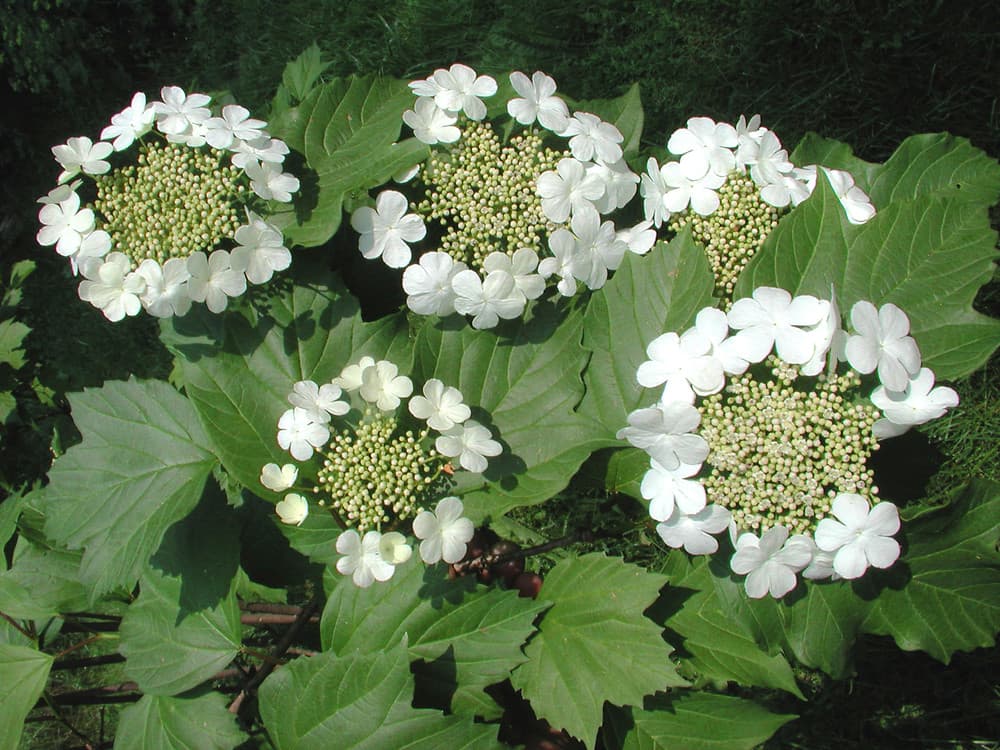
Scientific Name
Viburnum opulus
Common Names
Cramp Bark, Guelder Rose
Plant Family
Adoxaceae
Location
Native to Europe and North America. Found in damp woods, hedgerows, and stream banks. Often grown as an ornamental shrub.
Description
Deciduous shrub with trilobed leaves, white lace-like flowers, and clusters of bright red berries. Bark is grayish-brown and smooth when young. The medicinal part is the inner bark of the branches.
Uses
Primarily valued for its powerful antispasmodic and relaxant actions on smooth muscle, especially in the uterus, bladder, and gastrointestinal system. It is traditionally used to relieve dysmenorrhea (painful menstruation), uterine cramps, and ovarian pain. The bark is considered a “cramp bark” because of its long-standing reputation for loosening uterine tension, helping threatened miscarriage (by reducing uterine spasm), and regulating uterine smooth muscle tone. It also helps with other types of muscle cramps and spasms (e.g. intestinal colic, bladder spasms), often relaxing the nervous-muscular tension associated with these conditions. Beyond the smooth muscle effects, Viburnum opulus exhibits anti-inflammatory, antioxidant, and mild analgesic properties, so it helps reduce inflammation and pain that accompany cramping and spasms. The fruit and bark have also been used in folk use for respiratory conditions like cough, kidney issues (stones), and for vascular issues such as palpitations, angina or hypertension (via vascular relaxation), though these uses are less well established.
Energetics
Cooling, relaxing, astringent. Brings relief to gripping pain, especially in the uterus, gut, or lower back.
Parts Used
Inner bark (dried)
Constituents
Coumarins (scopoletin), viburnin, tannins, salicylates, resins
Dosage
- Tincture (1:5): 30–60 drops, 2–3x/day or every few hours as needed
- Decoction: 1 tsp bark per cup, simmer 15 min
- Often combined with nervines or warming herbs
Notes on Use
Cramp Bark is invaluable in uterine formulas. Used most often for menstrual pain, but it’s also excellent for muscle tightness, tension headaches, or post-exercise soreness. It combines well with black cohosh, valerian, or ginger. Strong but smooth energy — like a gentle letting go.
Harvesting
• Bark is collected in spring or fall from young branches. Peel and dry carefully.
Contraindications
Avoid in people allergic to salicylates. Use caution in pregnancy (unless with trained supervision).
Recipes
- Menstrual Cramp Blend: Cramp bark, ginger, black cohosh
- Spasm Soothing Formula: Cramp bark, valerian, passionflower
- Back Pain Liniment: Cramp bark, St. John’s Wort, cayenne